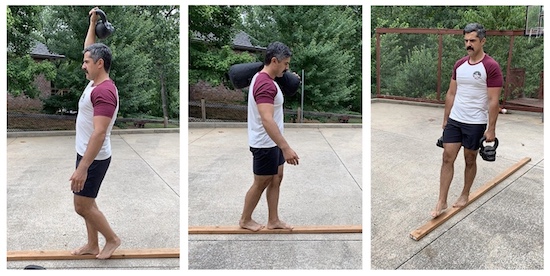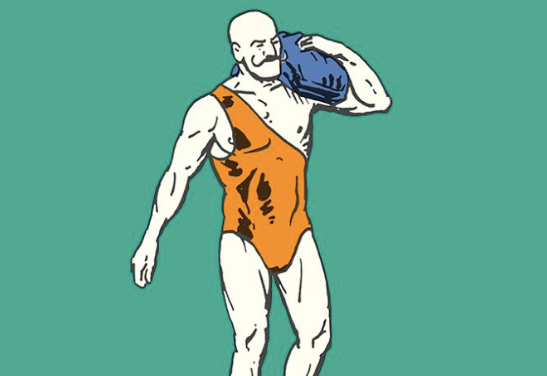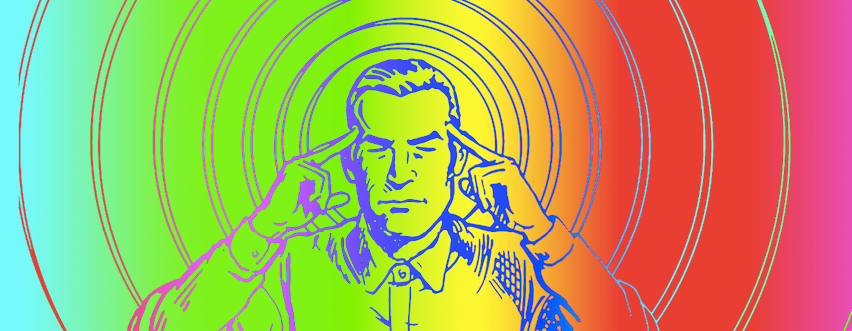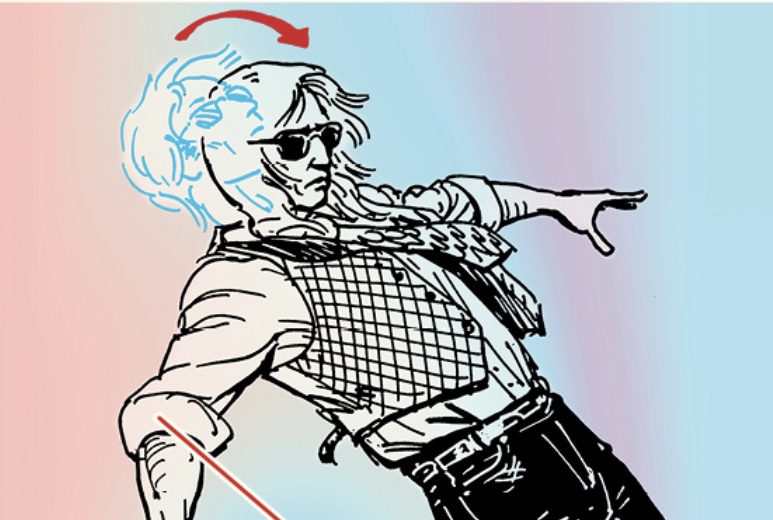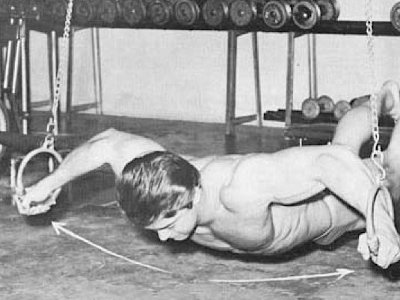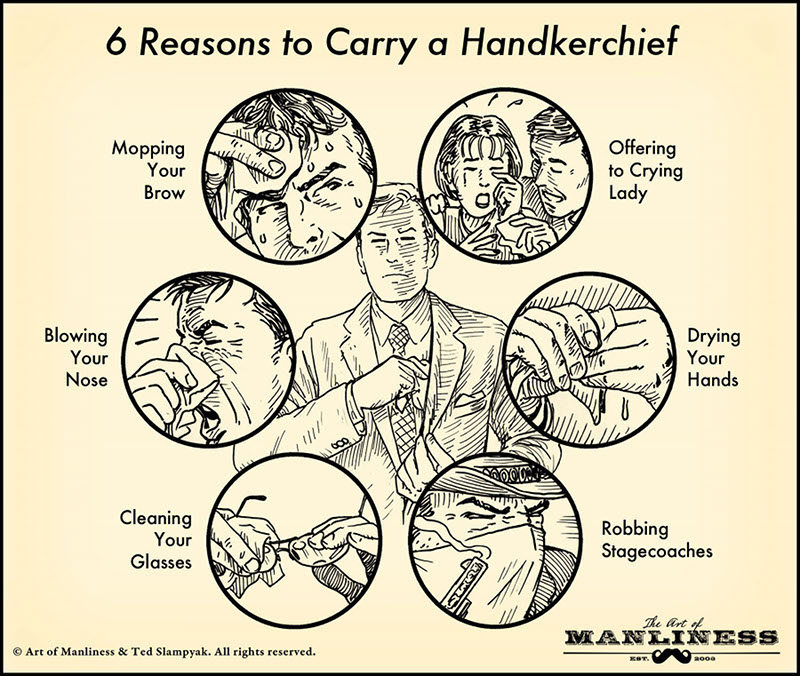We take our balance for granted.
Balance is what allows us to go from sitting to standing and to walk and run without falling flat on our faces. Even when you’re sitting “still,” your body is imperceptibly balancing itself. Below the level of consciousness, our bodies and minds work together to keep our center of gravity aligned with our base of support as we go about our daily lives.
We tend not to notice our sense of balance, because the surfaces we ordinarily traverse are typically quite stable. We walk on flat, even floors and sit on wide, sturdy chairs.
It’s whenever we encounter complexities in our environment — like an icy sidewalk or a narrow ledge — that we start to become acutely aware of our sense of balance. In situations like these, keeping our center of gravity aligned with our base of support becomes a little trickier. Since our body and mind don’t encounter environments like that very often, our internal “gyroscope” doesn’t work very well, and we either flail our arms and legs wildly or we fall down. At best we look like a spaz; at worst we injure ourselves.
Instead of resigning yourself to losing your balance when the environment throws a center of gravity curveball at you, practice this physical skill.
Not only will practicing your balance help you navigate complex surfaces more efficiently, it can strengthen joint stability and carry over to sports if you play one. More importantly, it can help stave off the disequilibrium that often comes with old age, and can rear its head even on regular surfaces. One out of three people over the age of 65 fall each year. And when old people fall, they often break things like hips, which can induce a slide towards debilitation and death.
Better to keep up your agility through preventative practice.
Fortunately, balance practice doesn’t necessitate running out and buying a slack line or a gymnastic balance beam.
Just stop by Home Depot on the way home from work and buy a 2×4 for $5.
Consider the 2×4
A few years ago, Kate and I worked with a MovNat coach here in Tulsa named Aaron Baulch. One of the first things he had us do was buy a 2×4 to work on our balance. A 2×4 is the perfect piece of equipment for balance practice for the following reasons:
- Its flat surface makes balancing on it less difficult than balancing on a curved object like a log, while its narrow width keeps movements sufficiently challenging.
- Its elevation tests balance to a greater degree than walking on the ground, but it’s low enough that there’s little to no risk of injury if you fall off.
- You can put a 2×4 anywhere. I’ve got an 8-foot-long 2×4 in my garage for a longer surface for practicing balance movements. And I’ve got a 4-foot-long 2×4 tucked away in my living room for anytime, indoor practice.
- It’s cheap.
- It’s fun. You’d be surprised how much fun balancing on 2×4 is.
12 Balancing Skills to Practice on a 2×4
Got your 2×4?
Excellent. Time to start practicing some movements on it.
All of these movements come from the MovNat methodology created by Erwan LeCorre, which seeks to systematically reintroduce and refine natural movement patterns and physical skills, including balance.
Some of these are “ordinary” movements when done on wide, stable surfaces; they become balance challenges when you do them on the narrow surface of a 2X4.
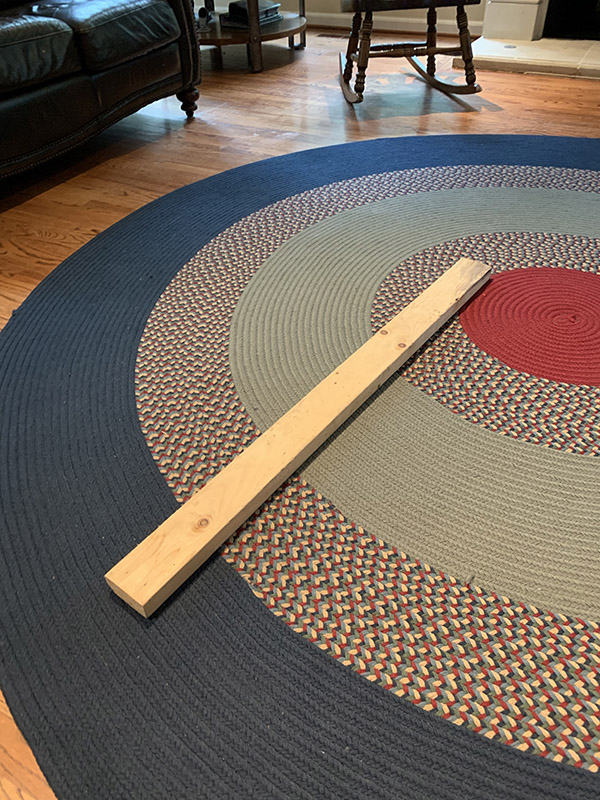
The 4-foot 2×4 that we keep in the house for impromptu balance work.
You can practice these movements anytime. I’ll do them on my longer 2X4 in between sets while I’m barbell training in my garage, or bust some moves on the shorter 2×4 in my living room to take a break from reading. You could probably keep a short 2×4 in your office and walk back and forth on it during breaks. You might get some funny looks, but you also might get some folks who’ll want to join you.
Below I show my go-to movements I use on the board. Try all of these out. Mix and match them. Work more on the ones that give you the most trouble. Check out Erwan’s book, The Practice of Natural Movement, for even more movements you can do on a 2×4.
1. Balance on One Leg

Simply balance on one leg at a time. Use your arms for counterbalancing at first, but then try using your free leg for counterbalancing instead; in real life situations, you may not have your arms available to help because they’re doing something like carrying a load.
2. Walk Forward/Walk Backward 
Walk forward and backward on the 2×4. As you’re walking, try to look down at the 2×4 as little as possible.
3. Side Shuffle
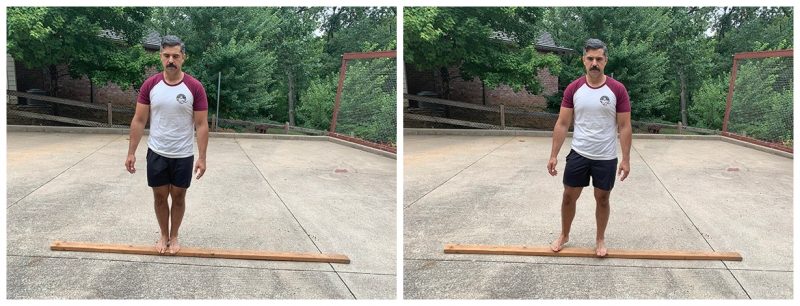
Stand on the board on the balls of your feet, feet together. Your heels should be off the board. Take a stride to the side with the foot that’s in the direction you’re going. Bring your back foot to your front foot. Repeat until you get to the end of the board and then switch directions.
The side shuffle is a more difficult way to traverse a narrow walking surface, but it’s a great way to get familiar with your center of gravity by using your hips to counterbalance yourself forward or backward.
4. Cross Reverse
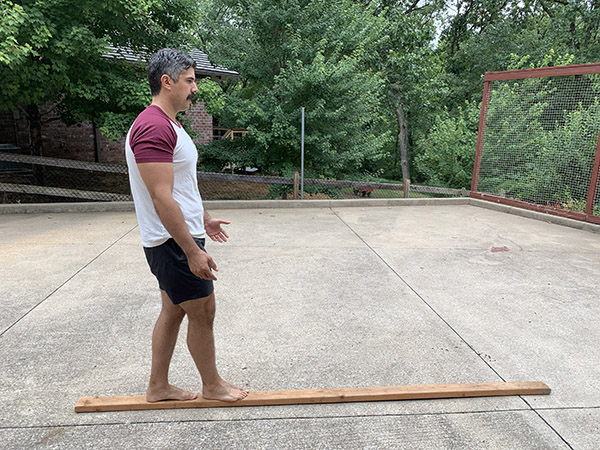
Walk forward.

Keep your weight on your back foot and bring your front foot perpendicular to the board. Shift your weight onto your front foot.
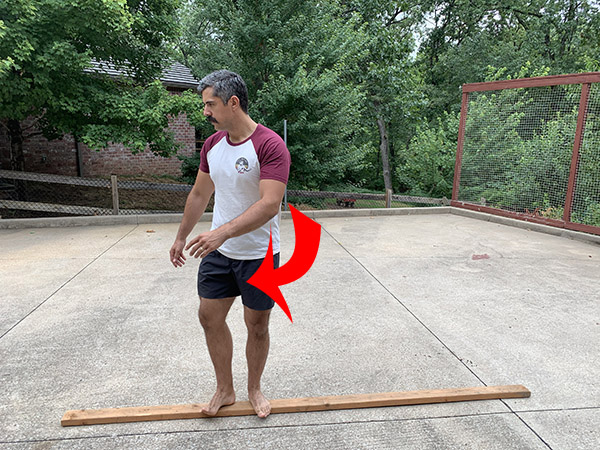
Rotate your hips 180 degrees so that you’re facing the opposite direction that you were going.
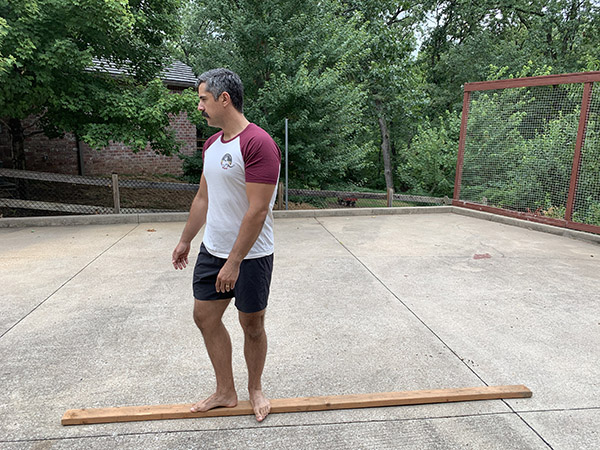
Allow what was your back foot to align with the board. Shift your weight onto that foot and complete the hip rotation.
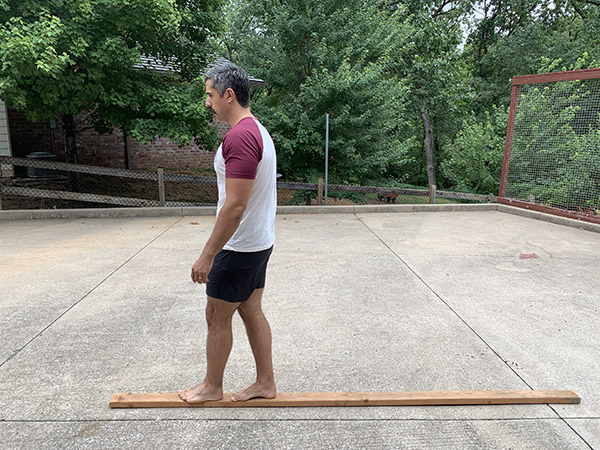
Walk in the opposite direction. Try the cross reverse again, but this time use your other leg as the lead leg.
The Cross Reverse is used to reverse directions on a narrow surface. It provides a lot of stability during the reversing process.
5. Pivot Reverse
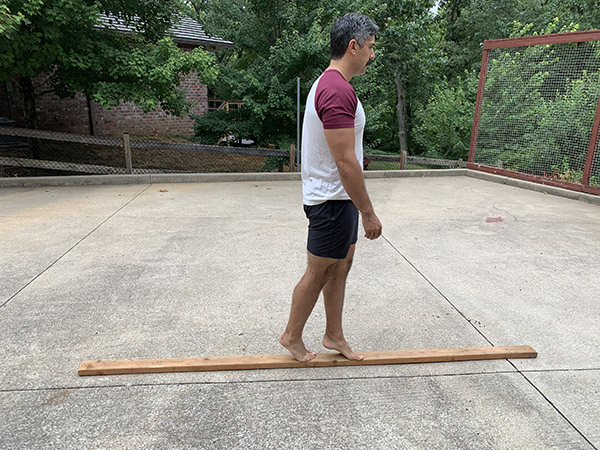
Stand on the balls of your feet.
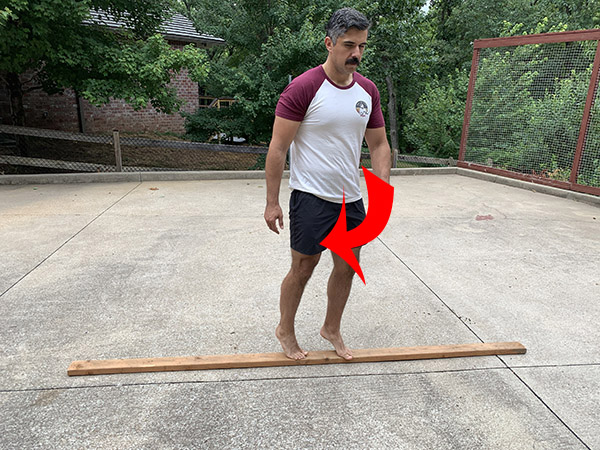
Rotate your hips 180 degrees. It helps to turn your head first and then your hips. I didn’t do that in this picture, but keep that in mind. During this part of the movement, you need to keep your weight evenly distributed between both feet or else you’re going to fall off.
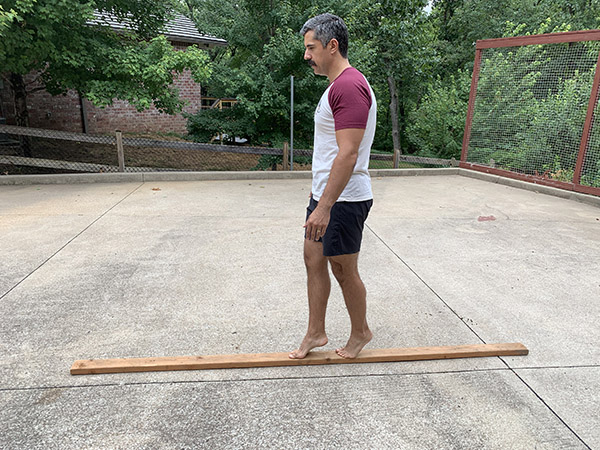
Now you’re on the balls of your feet, but in the opposite direction. Congratulations.
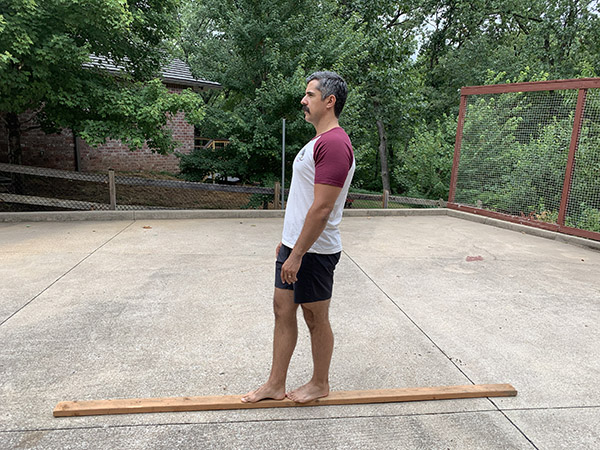
Lower your heels to the board. Walk.
The Pivot Reverse is a bit tricker than a cross reverse, but it’s much quicker.
6. Deep Knee Bend

Stand with your feet perpendicular to the board on the balls of your feet.
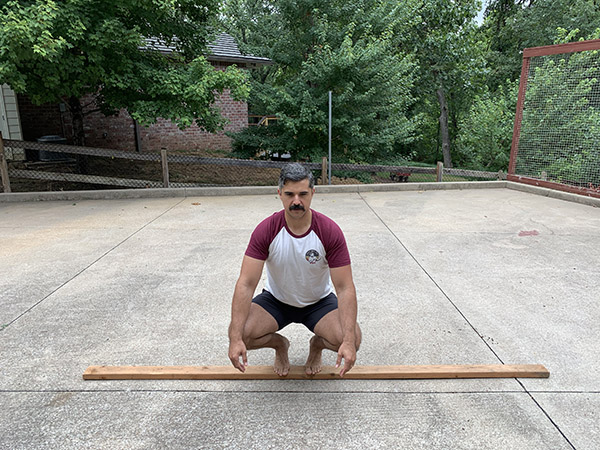
Squat down into a catcher’s position. Base of support is on the balls of your feet with your heels off the board, wrists or hands resting on knees. Try to maintain an upright, but relaxed posture.
The Deep Knee Bend is both a good balancing exercise, and a good stretch.
7. Deep Split Squat
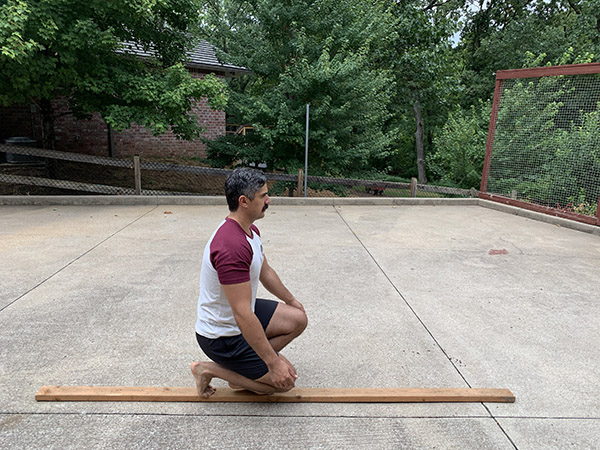
You’re basically kneeling on one knee, but without letting your knee touch the ground. Going down into this position provides a lot of stability since it lowers your center of gravity. It’s a good position to go to if you ever feel yourself getting off balance during a forward walk.
8. Deep Split Squat Reverse
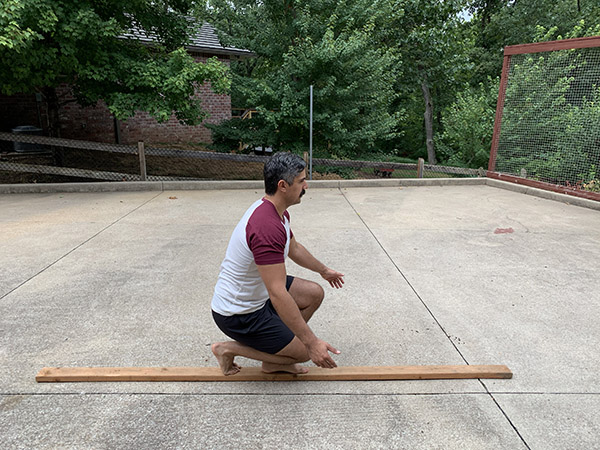
While in a Deep Split Squat, shift your weight to your back foot.
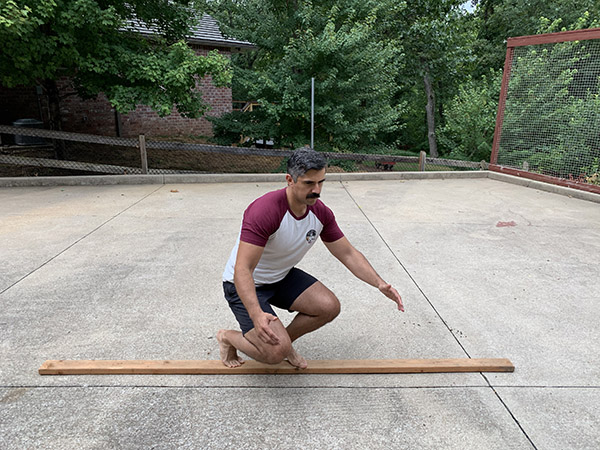
Begin to rotate by turning your front leg internally.
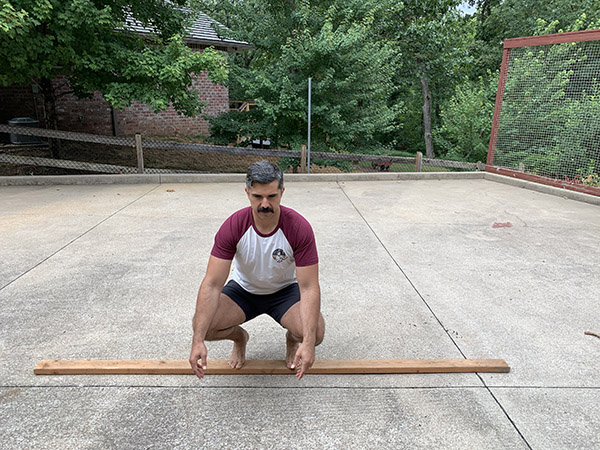
The midway point of the reverse will have you in a Deep Knee Bend position.
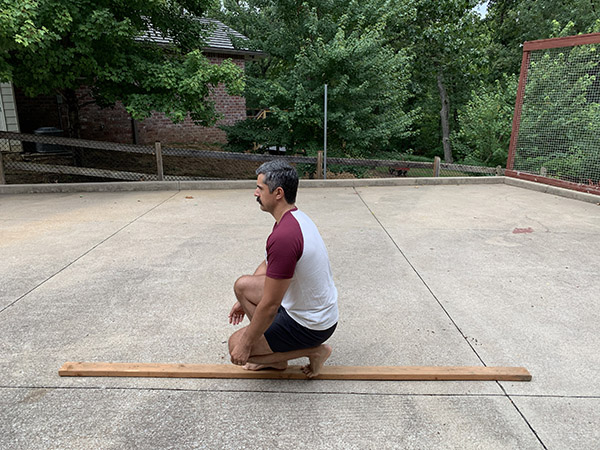
Complete the reverse.
As the name implies, here you’re reversing from the Deep Split Squat position. This reverse provides the most stability and is the safest way to reverse since your center of gravity is lower.
9. Foot-Hand Crawl
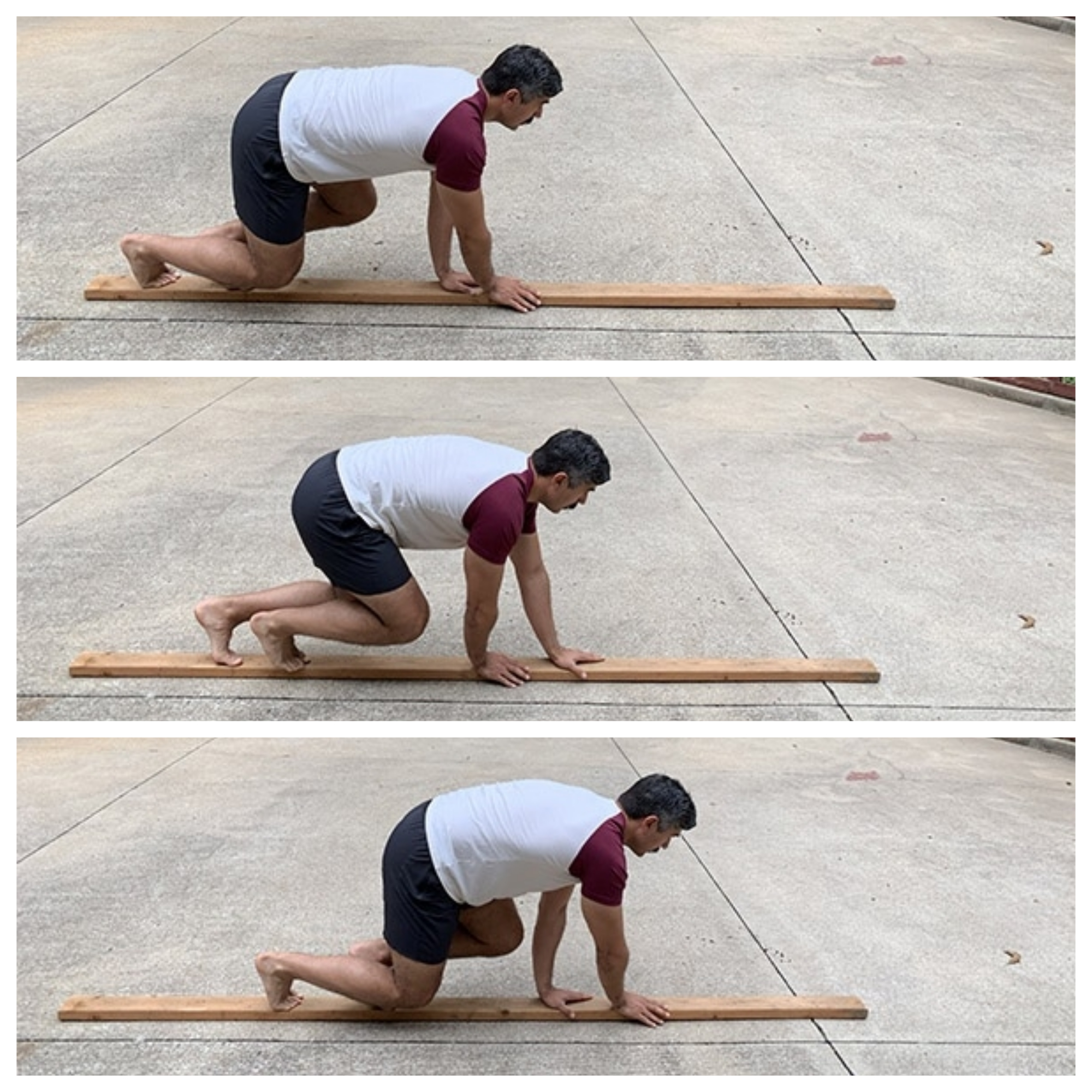
Knees are off the ground. The only point of contact with the board are hands and the balls of your feet.
10. Tripod Transition
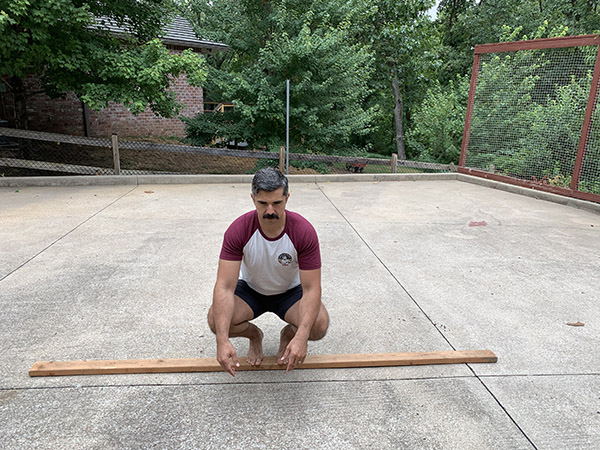
Lower yourself to a Deep Knee Bend position.
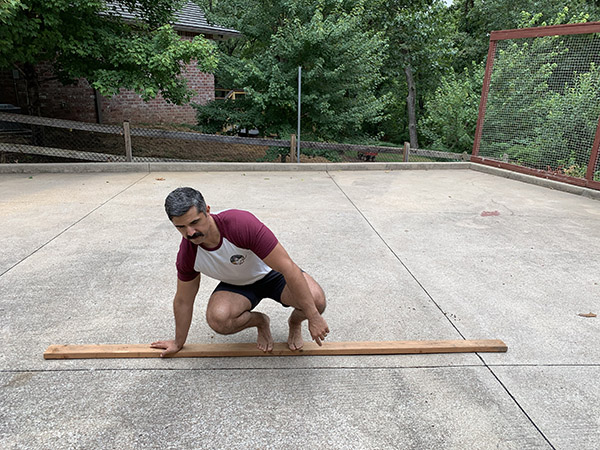
Place your right hand down on to the board. You’re now in a tripod position because you have three points of contact with the board — your hand and your two feet.
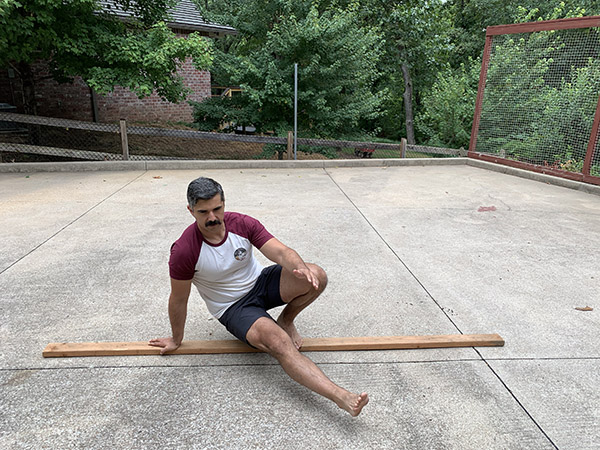
Shoot your right leg out through the hole between your right hand and left foot. Hold yourself in that position for a second or two.
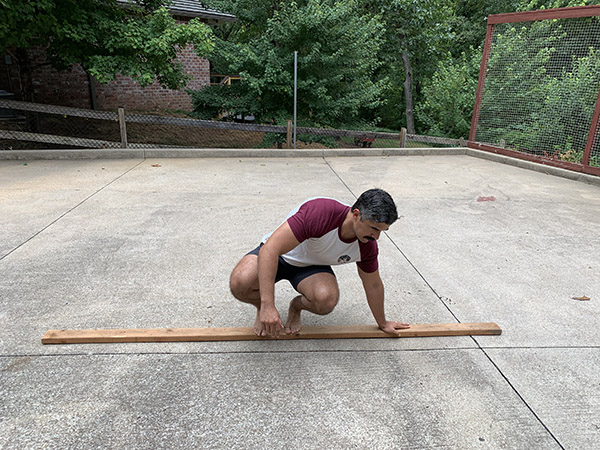
Repeat on the other side.
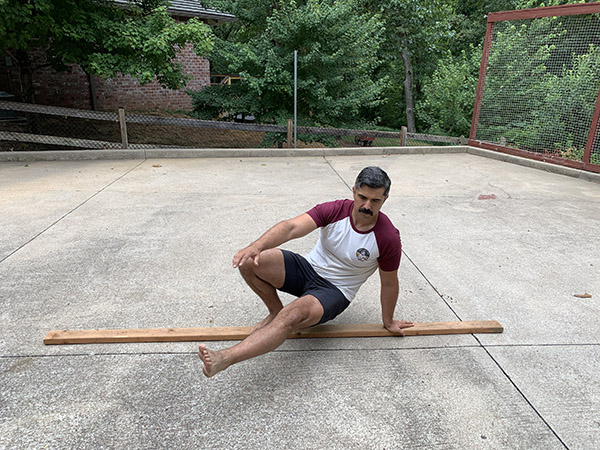
The Tripod Transition is one of my favorite movements to do on a board. It’s a fun, dynamic movement that requires you to really think about how you’re moving.
11. Jump and Land
12. Carry Weighted Objects
You can increase the difficulty level of walking across a board by carrying heavy items. You can use any of the carries that we highlighted in our post Don’t Just Lift Heavy, Carry Heavy
Additional Resources:
- Get Fit Like a Wild Man: A Primer on MovNat
- Podcast: The Workout the World Forgot
- Podcast: Break Out of Your Cage and Stop Being a Human Zoo Animal
- 10 Physical Skills Every Man Should Master
- Don’t Just Lift Heavy, Carry Heavy
- Take the Sitting-Rising Test



